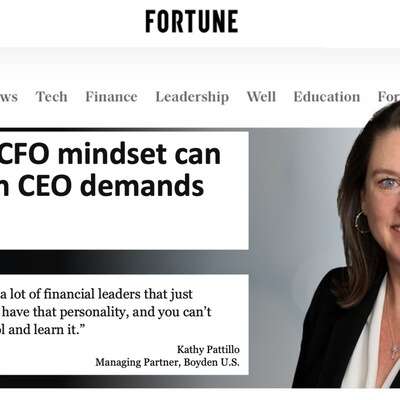This article was originally published by Forbes Business Council. Click here to view the original article.

Have you ever been in one of those meetings? A meeting where you tackled an open issue, decided on a solution and moved on to the next agenda item, yet something still wasn’t sitting right with you? That meeting where you tried to ignore the nagging feeling that you needed to pause?
Maybe you realized that more discussion and reflection were needed. Or the group’s underlying assumptions needed to be challenged. Or perhaps one member’s biases drove the diagnosis and solution.
Did you say something? Or did you roll with the forward momentum, hoping the feeling would subside—telling yourself that things probably would turn out?
What you experienced at that moment was a call to courage—a call to willingly take action despite challenge, fear or danger. I have observed great shows of courage in organizational life—such as voicing an unpopular viewpoint or making a needed but risky strategic shift. I also have seen a lack of courage—such as staying silent to avoid making waves.
Bank Failures And The Missed Call To Courage
I was reminded of the need for courage as, one by one, SVB Financial Group, Signature Bank and First Republic Bank were placed into FDIC receivership this spring. While critics argued that the culprit behind these bank failures was the boards’ focus on diversity and other emergent issues and consequent inability to fulfill their duty of “credible challenge,” I considered—as I often do—“What else might be true?”
In reflecting on my years observing, studying and participating in boardroom dynamics, I realized that directors sometimes avoid asking management the tough questions that challenge and elevate their thinking and actions—for reasons that may seem sound at the time.
Sometimes, they refrain from questioning because they don't want to obstruct progress or be seen as difficult. Other times, they didn’t want to expose their own ignorance and assume everyone else knows what is going on. Or they may simply have such strongly held convictions that they don't recognize when the opportunity to expand their own and others’ thinking. While this type of reasoning may be understandable, each scenario reflects a missed call to courage. But what exactly is courage and what does it look like when enacted by board members?
The Anatomy Of Courage
Courage means willingly taking action for a higher good, despite facing challenges, fear or danger. What makes courage hard is that positive outcomes are not guaranteed. Yet, we need courage for the military victories, innovations and social impacts that forge history and fuel societal progress.
There are four types of courage that boards can use to help their organizations navigate ongoing and strategic challenges:
1. Moral courage. This is about exercising conscientiousness, resulting in ethically correct decisions that align with universal human values and long-term social good.
2. Disciplined courage. This includes sustaining reflection, strategic thinking and focus that can result in thoughtful, deliberate action about issues of vital importance.
3. Intellectual courage. This type of courage has to do with challenging existing assumptions and incorporating new insights gained from experience and research, resulting in expanded knowledge.
4. Empathetic courage. This means seeking others’ meanings and experiences and risking being changed by them, resulting in deeper understanding.
Each board displays different amounts of moral, disciplined, intellectual and empathetic courage through their actions. The result is a composite courage footprint I call their courage quotient. I argue that every board should look to increase its courage quotient in order to tackle the ongoing and intensifying strategic threats we are facing.
Strategic Challenges
I see five issues, in particular, that will require board members to go beyond the easy answers and employ courage:
1. Environmental, social and governance (ESG) issues. ESG concerns a set of complex and often interrelated issues affecting planetary, worker and organizational well-being and performance. Stakeholders disagree on what exactly is included under the umbrella of ESG, and further tend to be sharply polarized about these issues.
2. Cybersecurity. The convenience and performance enhancements made possible through digitization have also led to the proliferation of cybercrime. All organizations are potential victims of increasingly sophisticated cyberattacks and should have processes in place to quickly deal with this eventuality.
3. Board composition and diversity. Concerns about quality corporate governance mean that boards must institute effective refreshment practices to ensure they have the expertise and experience to provide adequate governance, advisory and service to their companies. Alternately, some stakeholders argue that the focus on diversity has become excessive.
4. Risk oversight and management. Global economic pessimism, inflation concerns and recession risk mean that boards must possess and exercise strong risk management competencies to keep their organizations financially sound and sustainable. Record-breaking inflation has persisted globally despite national governments’ attempts to curb this trend.
5. Talent and workforce matters. Boards must ensure their organizations have competent leadership and the necessary talent both now and in the future. To do so, boards can effectively manage preparedness efforts, oversee succession planning and verify that talent development programs are in place.
These pressing and often contentious issues mean that varying viewpoints and needs must be explored and negotiated to determine the right path. Directors will have to cultivate novel ways of thinking, knowing and acting as well as find ways to reexamine their processes and structures. This is no easy feat.
Developing And Applying Courage In The Boardroom
The next articles in this series will address how your board can leverage courage to tackle each challenge outlined above. In the meantime, try the following exercises to gauge your board’s courage quotient:
1. How much moral, disciplined, intellectual and empathetic courage does your board display today?
2. How much courage does your board need to navigate the five strategic challenges discussed in this article?
3. What gets in the way of your board exercising more courage?
Your board’s courage quotient can be developed. However, each type of courage needs to be understood and exercised to do so. When sufficiently developed and applied, courage can become your board’s superpower for governing your company toward success.




